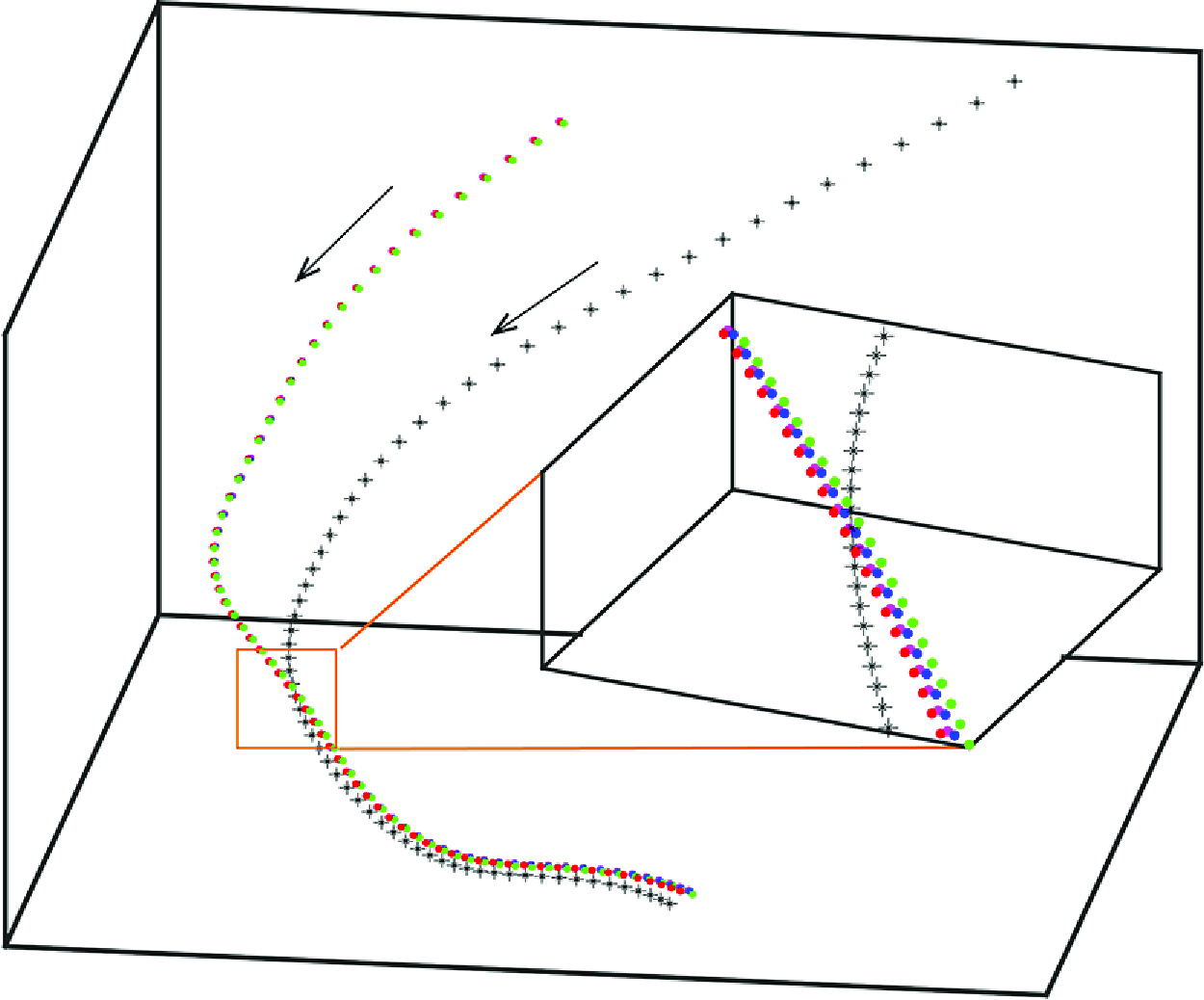No CrossRef data available.
Published online by Cambridge University Press: 30 June 2025

We extend the perceived velocity gradient defined by a group of particles that was previously used to investigate the Lagrangian statistics of fluid turbulence to the study of inertial particle dynamics. Using data from direct numerical simulations, we observe the correlation between the strong compression in the particle phase and the instantaneous local fluid compression. Furthermore, the Lagrangian nature of the particle velocity gradient defined in this way allows an investigation of its evolution along particle trajectories, including the process after the caustic event, or the blow-up of the particle velocity gradient. Observations reveal that, for particles with Stokes number in the range  $St \lesssim 1$, inertial particles experience the maximum compression by local fluid before the caustic event. Interestingly, data analyses show that, while the post-caustic process is mainly the relaxation of the particle motion and the particle relaxation time is the relevant time scale for the dynamics, the pre-caustic dynamics is controlled by the fluid–particle interaction and the proper time scale is determined by both the Kolmogorov time and the particle relaxation time.
$St \lesssim 1$, inertial particles experience the maximum compression by local fluid before the caustic event. Interestingly, data analyses show that, while the post-caustic process is mainly the relaxation of the particle motion and the particle relaxation time is the relevant time scale for the dynamics, the pre-caustic dynamics is controlled by the fluid–particle interaction and the proper time scale is determined by both the Kolmogorov time and the particle relaxation time.